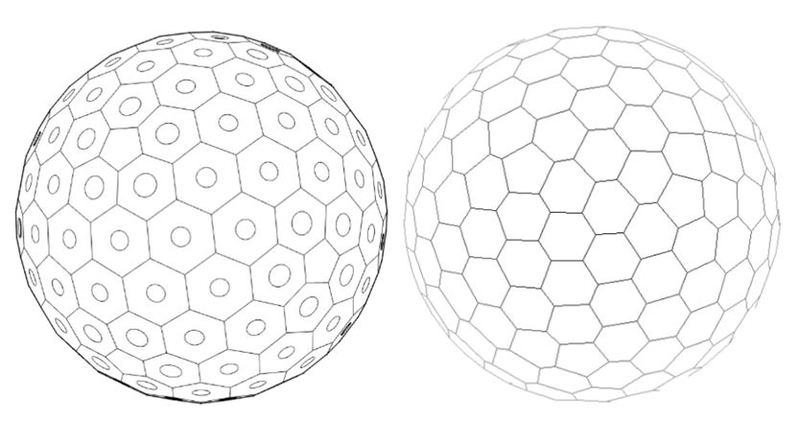Researchers at the George Washington University have invented a novel class of golf balls having a polyhedra design that can yield lower drag coefficient than designs based on dimpled spheres. The drag reduction is applicable to other sports equipment in general having a bluff body, such as the head of a golf club or a bike helmet.
For the past 100 years the vast majority of commercial golf balls have used designs with dimples. A dimple generally refers to any curved or spherical depression in the face or outer surface of the ball. The traditional golf ball, as readily accepted by the consumers / public, is spherical with a plurality of dimples, where the dimples are generally formed as depressions on the outer surface of a sphere. The vast majority of commercial golf balls use dimples that have a substantially spherical shape. It is well established that such depressions can lower the drag coefficient of a ball compared to that of a smooth sphere at the same speed. To a wide extent the dimples have been the only configuration / parameter used to lower the drag coefficient.
The inventors herein have found that golf ball designs design based on polyhedra can lead to drag coefficients which are significantly lower than the dimpled sphere golf ball designs. A first class of such golf ball designs are made up of convex polyhedra whose vertices lie on a sphere (as seen in the figure below, left side). A polyhedron is a solid in three dimensions with flat polygonal faces (e.g. hexagons, pentagons), straight sharp edges and sharp corners or vertices. Another class of golf ball designs which could even further decrease drag coefficient is based on a combination of convex polyhedra and dimples disposed in the centers of the flat polygonal faces (as seen in the figure below, right side)
The inventors herein have found new parameters, in addition to dimples, and golf ball configurations which could be used to reduced drag coefficient. It is another object to provide a golf ball with minimal drag coefficient that is non-dimpled. In one embodiment, the golf ball has a plurality of flat faces with sharp edges and points that collectively form a polyhedron.

Applications:
1. Improving performance of golf ball
2. Improving performance of other sports equipment in general having a bluff body, such as the head of a golf club or a bike helmet.
Advantages:
1. Lower drag coefficient.
2. Better aerodynamic performance